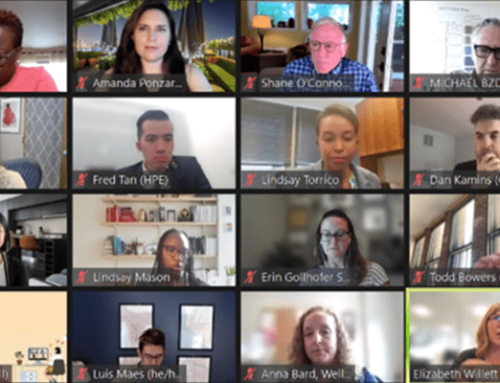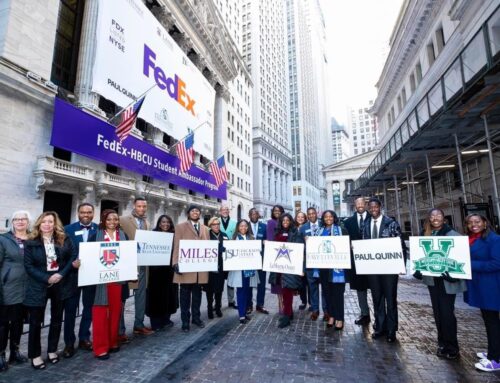The Bruce Wayne/Batman Paradox and the Rise of ESG
By: John Friedman, Manager, Sustainability for WGL, and Amanda Ponzar, CHC
The lesson traditionalists learned from the Great Depression was take any job, even one that is ‘beneath you’ to make ends meet. Many in today’s generation follow a different mindset and only consider jobs that they believe are worthy of their time and talent.
For most of human history, people lived two separate lives: their ‘work’ selves and their ‘altruistic’ selves. In some cases, more at the end of their career or even posthumously in their wills, individuals felt compelled to “give back.” For others, they gave annually to charity drives at the office or volunteered evenings and weekends.
But increasingly, that duality has been broken. Businesses have adopted the model of ‘strategic philanthropy’ and aligned their charitable giving with business priorities and causes important to their stakeholders (mostly customers). Similarly, companies evolved volunteerism as a way to engage employees, build team spirit and leverage the workforce in communities where the company operated.
Enter the Bruce Wayne/Batman Paradox – where making money and doing good are no longer considered separate endeavors. But there is an even greater parallel.
Consider Batman’s greatest villain – the Joker. The Joker, according to at least several of the backstories attributed to him over the years, was created by being submerged in a vat of chemicals — at none other than Wayne Enterprises, the source of Bruce Wayne’s tremendous wealth. In other words, Wayne Enterprises and therefore Bruce Wayne and Batman, spend their time and effort compensating for problems of their own creation.
This concept is discussed in Anand Giridharadas’ recent book Winners Take All: The Elite Charade of Changing the World. The book argues that the wealthy and powerful engage in philanthropy that “preserves the status quo” and “obscures their role in causing the problems they later seek to solve.” For example, a company leader may make generous donations, but the company may not pay a living-wage with employees relying on government and community assistance. Similarly, a company may participate in philanthropy and CSR activities while continuing to damage the environment, sell products that are unhealthy and addictive, or continue policies and practices that perpetuate disadvantage in certain communities.
Many of Batman’s villains have similar backstories:
- Harley Quinn is in an abusive relationship with the Joker and thus a ‘Scope 3’ villain – not the direct, but the indirect consequence of Wayne Enterprises’ actions.
- The Penguin blames (rightly or wrongly) the Waynes for his family’s misfortunes (inequity).
- Catwoman, in some versions, was inspired by interaction with Batman when he saved her life but ultimately turns to crime as part of her ‘love/hate’ relationship with him.
This is the second part of the Paradox – employees do not want their companies to be responsible for the problems that the company addresses through its giving and volunteerism efforts. Employees want to not only ‘live their values’ at work, they want to ‘work their values’ as part of their career. Just as prospective employers are encouraged to seek employees who match their culture, prospective employees are increasingly doing the same, with much higher expectations for employers. Good intentions aren’t enough. These days, employees go public on social media or participate in walkouts to address inconsistencies, inequity, virtue-signaling or woke-washing within the company. Employees are looking for authenticity and accountability, starting with their experiences internally and continuing throughout the entire supply chain or “value chain.” This means examining the company’s global effects on employees, customers, communities, suppliers, retailers and more. When done well, this analysis can lead to more comprehensive, and admittedly disruptive, levels of social responsibility focused on addressing societal problems and often a new, transformative business model, described as the “third theater of CSR” by Harvard Business School.
Surveys show that the vast majority of MBA students are bringing their values to the job hunt. They don’t just want their employer to compensate for problems in the community; they want the business itself to be one that has environmental, social and governance (ESG) standards built in as ‘standard operating procedure’ every day. ESG seeks to reinforce sustainability and ethical practices in all areas of the company. Some businesses have gone so far as to become Certified Benefit Corporations (B Corps), with legal requirements to evaluate their impact on workers, customers, community and environment and a social mission baked into the business model. Whether B Corp or not, positive community and individual change will happen when companies and those in power consider all stakeholders – examining business practices and their broad impacts, engaging diverse groups, and at a higher level, advocating for policy change and leading the way – doing what needs to be done before it’s required by law.
And that may be when Batman finally gets to hang up his cape: when Wayne Enterprises changes its business model and operates in a manner that does not damage the environment or perpetuate such drastic wealth inequity. Perhaps Batman could spend less time as a vigilante if he had been more vigilant as Bruce Wayne, actively engaging community stakeholders while seeking to decrease his company’s negative impacts.

John Friedman, Manager, Sustainability for WGL
With an international career spanning 2 decades, John Friedman is an award-winning communications professional and recognized sustainability expert who has helped some of the leading global companies to integrate their operational, financial, and cultural aspirations into sustainable and responsible business practices. He has been instrumental in helping three companies, Lafarge, Sodexo and WGL Holdings rise to the top of the sustainability rankings (DJSI/RobecoSAM and MSCI) for their respective sectors; building materials, food service/facilities management and energy.
A frequent speaker at conferences and business classes, Friedman is helps teach individuals and organizations how to integrate practices including environmental stewardship, social progress and sound governance into their overall business strategies, their corporate cultures and everyday actions by empowering and engaging employees at all levels for measurable results that drive business reputation and value.
He is author of “Managing Sustainability: First Steps to First Class” published by Business Expert Press.
On digital media he is recognized as a thought leader; on Triple Pundit’s List of the Top 30 Sustainability Bloggers on Twitter, #3 on GreenBiz list of most influential ‘twitterati’, #14 on Guardian Business’ 30 most influential sustainability voices in America, was voted #4 of the “100 leading voices in CSR” by Global CEO Magazine readers, and has regularly been included among the top voices in CSR by Forbes’ Brandfog.
An Albany State (New York) communications graduate, Friedman earned a management certificate as part of the Lafarge/Duke Management Training program at the Fuqua School of Business in 2000.
Amanda Ponzar, Chief Communications and Strategy Officer, CHC: Creating Healthier Communities
Amanda was promoted to Chief Communications and Strategy Officer in August 2018 after originally joining CHC in August 2016 as VP of Communications and then Chief Marketing Officer. Prior to joining CHC, Amanda held communications roles with top global nonprofits, including United Way Worldwide, Good360, and American Red Cross National Headquarters, as well as marketing roles with The Franklin Mint and other groups. Amanda earned a master’s degree in media communications with a focus on advertising and marketing from Webster University, a bachelor’s degree in English from Penn State, plus Executive Education in Corporate Social Responsibility from Harvard Business School.
Amanda is a media spokesperson, quoted in The Wall Street Journal, Associated Press, MSN, NBC News, Reader’s Digest, INC, Fast Company, Washington Post, Forbes, New York Post, MarketWatch, U.S. News and World Report, Woman’s Day, Working Mother Magazine, Prevention, Parents, The Hill, Yahoo! Glamour, Total Beauty, EcoSalon, DailyWorth, CareerBuilder, Upworthy, Toronto Star, and many more. Connect with her on LinkedIn or Twitter @LivingUnited.







